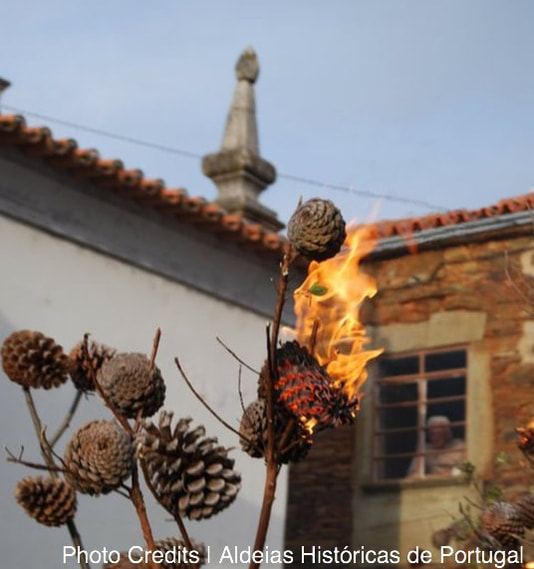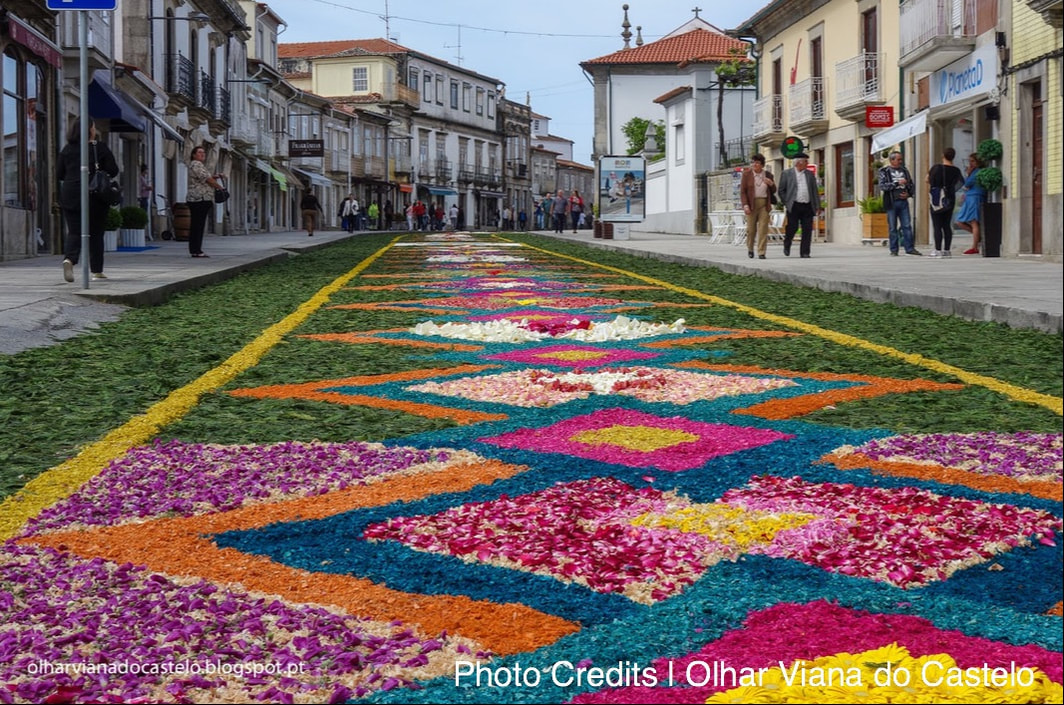|
Being Portugal a very catholic country, most of our traditions are strongly related to our religious heritage, particularly in the countryside. It is notorious the presence of religion in all fields, from architecture to gastronomy and, of course, our festivities. When it comes to celebrations the most important one is, without a doubt, Easter, as it represents Jesus ressurrection. Maybe that explains why we suffer in anticipation for so many days and then celebrate it with a bang! 40 days before EasterBack in the days during Lent, what we call Quaresma, people used to respectfully avoid eating meat on Fridays, as it was the day Jesus was crucified, and ate codfish instead. Nowadays only the most devoted keep this tradition. Many seek alternatives, such as letting go something they crave or setting challenges to themselves. It can be something simple as avoiding chocolate or going more often to the gym (yep, simple...). No matter the sacrifice, the purpose is to try to be strong-minded and overcome things that are hard and challenging. A week before EasterThe festivities start during the so-called Holy Week. On the last Sunday godsons and goddaughters are meant to visit their godmothers and godfathers to give them a bouquet of violets or an olive branch. For that reason it is known as Domingo de ramos, the “bouquet Sunday”. In return, they should offer a folar, a traditional Easter cake, or almonds. Nowadays the exchange is more liberal, and there are all sorts of flowers, plants and treats being exchanged. During the week many parades - procissões, in Portuguese - bring the locals to the streets. From north to south, there are many curious celebrations! On Holy Wednesday it is worth going to Braga to witness over 500 locals recreating many episodes before the birth of baby Jesus. The parade is known as Procissão da Burrinha (“little donkey parade”), because Joseph and the Virgin Mary escaped to Egypt on a donkey. Two days after, on Holy Friday, there are two parades worth mentioning: Procissão das pinhas (“pine cones parade”) and Procissão do Enterro do Senhor (“Jesus burial parade”). On the first one, which happens in Barroca, a small village in the heart of Portugal, locals and pilgrims walk from a chapel to the main church square whilst singing and praying and holding pine tree branches. Before entering the church they light up the pine cones and create a fire together. The second one, in Óbidos, also happens at night time and the only way the locals are able to see the path they have to walk is due to some torches pinned along the way, which makes the celebration even more magical. On Holy Saturday all churches are full of people praying together. It's the Easter Vigil, the first oficial celebration about the resurrection of Jesus Christ and it starts after the sun sets and only finishes at dusk, on Easter Sunday morning. It's Easter!The parades continue on Sunday too and the effort to leave everything pretty as a picture is notorious. People clean their houses and in many small towns the first thing you'll notice is a sea of flowers! Locals create the most amazing tapestries made with pretty flowers. All the effort is to receive Jesus, on the day of His return. Another tradition that still remains in many small towns and villages is the Compasso. The priest, together with a group of locals from the same parish, goes inside each house to bless its inhabitants. Everyone kisses the cross to welcome Him. In return they have a table filled with some treats and wine. Fair trade, han? And now, after all the sacrifices made during the month, we eat. We go all in with a full table with a roasted lamb as a center piece, wine and the famous folar, with a boiled egg in the middle! It is the perfect excuse to spend hours at the table with our loved ones. Is that it?Not quite... Festas do Espírito Santo (“the Holy Spirit Parties”) are celebrated every Sunday during the 7 weeks that follow Easter in every azorean island, but particularly in Terceira. On the 7th week “Holy Spirit soups”, a meaty broth with spices served with homemade bread, is given to the locals. The inspiration is obviously religious: trying to recreate the generosity of Queen Elizabeth (also known as Saint Elizabeth), who used to distribute bread to the poor and less fortunate ones. So basically Easter starts 40 days before the due date and finishes over a month after... You better take some holidays! Subscribe to our monthly newsletter to get special content, news and offers.
0 Comments
Leave a Reply. |
Categories
All
|
Telephone+351 938 503 009
|
|
Turismo de Portugal RNAVT nº 6915
|










